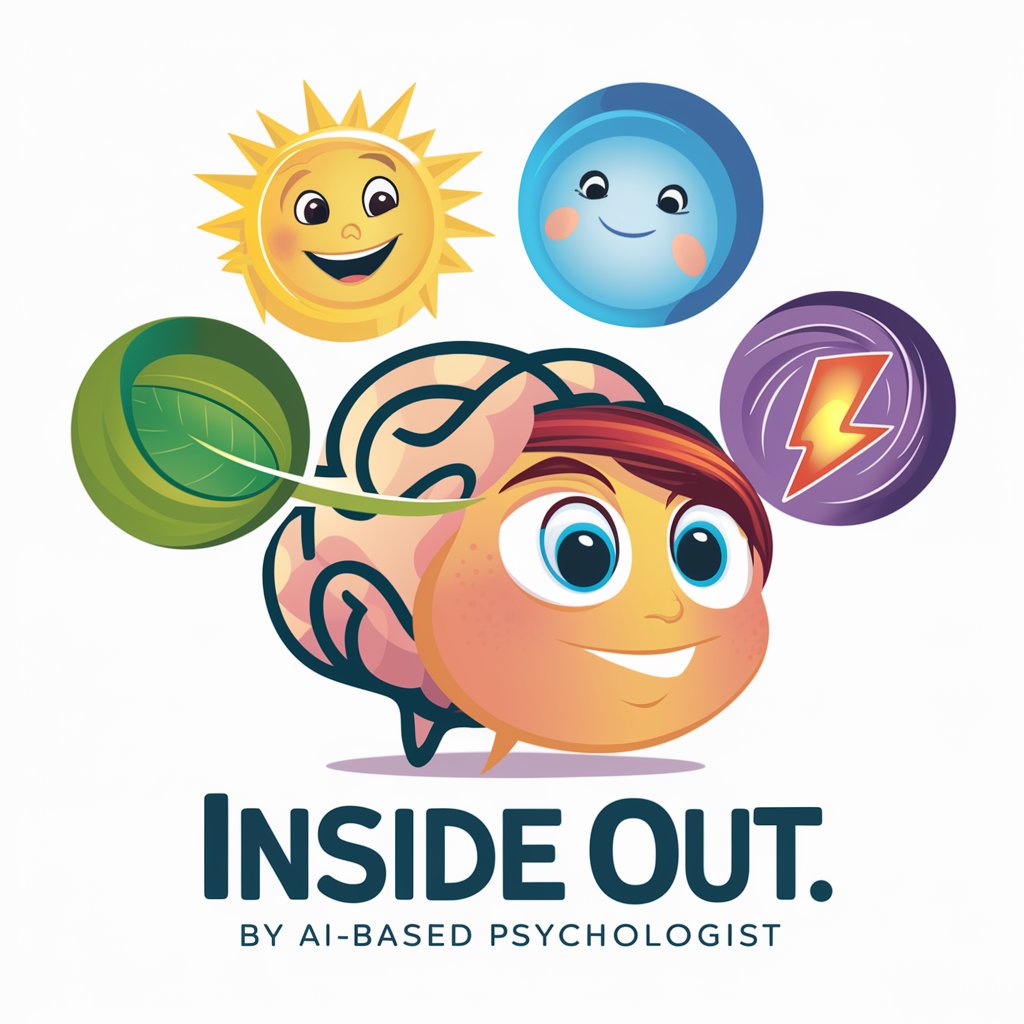Inside Out - Detailed Emotion Analysis

Welcome! Let's explore the emotions in your photos.
Unlock emotions through AI-powered analysis
Analyze the emotions in this photo...
What are the predominant feelings shown in this image?
Can you break down the emotional expressions in this picture?
What emotions are displayed by the faces in this photo?
Get Embed Code
Introduction to Inside Out
Inside Out is designed as an advanced AI tool specialized in analyzing facial emotions from photographs. Its core functionality revolves around the detection and interpretation of various emotions expressed by individuals in images, utilizing cutting-edge image analysis technologies. Inside Out quantifies these emotions, presenting the results in graphical forms, such as bar charts or pie charts, to offer a visual representation of the intensity and spectrum of emotions displayed. This approach enables a deeper understanding of the emotional state conveyed in a photograph, bridging the gap between complex emotional expressions and quantifiable data. For instance, in a scenario where a user uploads a photo of a person smiling, Inside Out would analyze the smile's nuances to differentiate between a genuine smile of joy and a polite, social smile. This detailed analysis assists in understanding the subject's true emotional state at the moment the photo was taken. Powered by ChatGPT-4o。

Main Functions of Inside Out
Emotion Detection and Analysis
Example
Detecting subtle differences in smiles, frowns, or surprise in photos.
Scenario
In a real-world application, a therapist may use Inside Out to analyze photos from a client's social media to discuss emotional states and patterns that may not be evident through conversation alone.
Quantitative Emotional Representation
Example
Converting emotional analysis into visual graphs showing emotion intensity.
Scenario
A user uploads a group photo, and Inside Out provides a pie chart detailing the predominant emotions displayed by the group, offering insights into the collective mood or social dynamics at the moment.
Emotion Trends Over Time
Example
Tracking how an individual’s displayed emotions evolve across multiple photos over time.
Scenario
An HR department might use Inside Out to analyze the emotional wellbeing of employees in company photos over the years, helping to gauge workplace morale and culture.
Ideal Users of Inside Out Services
Mental Health Professionals
Therapists and psychologists can utilize Inside Out to analyze clients' photos to better understand their emotional states and changes over time, providing a novel approach to complement traditional therapy methods.
Social Researchers
Academics and researchers focusing on social sciences might use Inside Out to study emotional expressions in various contexts, cultures, or social settings, aiding in the analysis of non-verbal communication and societal emotional trends.
Human Resources Departments
HR professionals can apply Inside Out to assess team dynamics, employee satisfaction, and overall workplace morale through analysis of company event photos, offering a unique perspective on organizational health.

How to Use Inside Out: A Step-by-Step Guide
1
Visit yeschat.ai for a complimentary trial, accessible without the need for a login or a ChatGPT Plus subscription.
2
Upload a photo for emotion analysis. Ensure the photo is clear and the subject's face is visible for accurate emotion detection.
3
Select the 'Analyze Emotion' option. Inside Out will process the photo and identify the predominant emotions based on facial expressions.
4
Review the graphical representation of emotions. The analysis will be displayed in formats such as bar charts or pie charts, quantifying the intensity of detected emotions.
5
Use the insights for your specific needs. Whether it's for academic research, emotional studies, or personal interest, the detailed emotion analysis can provide valuable insights.
Try other advanced and practical GPTs
Inside Out
Empowering emotional health with AI

Going Out Out
Laughter on Tap, Powered by AI

You should check out...
Discover Music with AI

Blades Out
Craft Intricate Mysteries with AI

Pure Prompt
Craft Your Vision with AI

Pure Math Mentor
Empowering your math journey with AI.

Inside Out
Empowering emotional healing with AI

Dine Out
AI-Powered Dining Concierge

Night Out
AI-Powered Evening Out Planner

Zoom Out an Image
Broaden your view with AI-powered imagination

Read Text Out Loud Bot
Bringing Texts to Life with AI

Vetonline A.I Ultimate
Empowering Veterinary Care with AI

Frequently Asked Questions About Inside Out
What types of photos work best with Inside Out?
Inside Out performs optimally with high-resolution photos where the subject's face is clearly visible. Avoid using blurry, low-light, or obstructed images to ensure accurate emotion analysis.
Can Inside Out detect emotions in group photos?
Yes, Inside Out can analyze multiple faces in a single image. However, for the most accurate results, it's recommended to focus on individual close-up photos.
How does Inside Out ensure privacy?
Privacy is a top priority. Inside Out analyzes images without storing them and ensures that all data is processed with strict confidentiality measures in place.
Is Inside Out suitable for academic research?
Absolutely. Inside Out provides quantitative emotion analysis, making it a valuable tool for psychological studies, social research, and any field requiring emotional data.
What differentiates Inside Out from other emotion analysis tools?
Inside Out stands out by offering detailed, graph-based emotion analysis that quantifies the intensity of various emotions, providing deeper insights than traditional binary or simplistic emotion detection systems.
